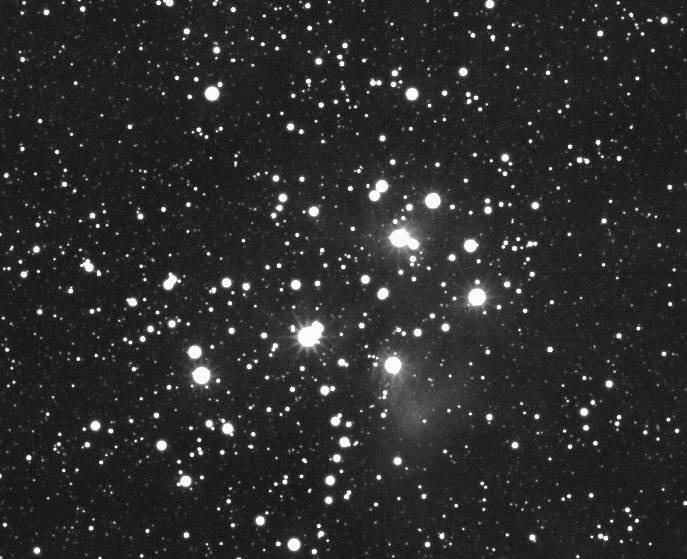Venus passes the Pleiades Drama in the starry sky on Friday
Bornheim · Astronomers also call the Pleiades the "Seven Sisters". The group of stars is located directly next to Venus on Friday and they are easy to see when the sky is clear.

Nasa has also taken images of the Pleiades. The stars are also known as M45.
Foto: NASAWhen the sun goes down on Friday, it is worth looking up into the starry sky, points out Michael Geffert, who operates the virtual Birtzberg Observatory in Bornheim. What will happen in the sky on Friday can even be seen with the naked eye, says the amateur astronomer, but will be even more impressive with binoculars.
You will be able to observe a special constellation in the western evening sky: The planet Venus will pass directly next to the Pleiades, a small group of stars. Because Venus is the brightest object in the sky, it is easy to find in the west without any help. With a small pair of binoculars, you will see a group of stars belonging to a prominent star cluster next to the planet, which is also called the evening and morning star. Nasa also explains the spectacle in its "Skywatching tips" and hopes for a cloudless night sky.
The seven stars can be seen without binoculars
The Pleiades can be found near Venus until about 5 April, "then the planet will move on," says Geffert. The Pleiades are also called the "Seven Stars" or the "Seven Sisters". Geffert explains this term: "In Greek mythology, they represent seven sisters who were transported to heaven by Zeus." Arranged like a small shopping trolley in a small space, they already attracted attention in antiquity and are depicted on the 3,600-year-old sky disc of Nebra.
The Roisdorf astronomer explains the starry sky very simply
The astronomer Michael Geffert, who lives in Roisdorf, worked from 1976 to 2019 as an astronomer at the Argelander Institute for Astronomy at the University of Bonn, among other things. He has been involved in astronomy public relations work for years and also inspires primary school children with an enthusiasm for astronomy. Last year, he organised a conference of amateur astronomers in Bornheim, together with the Birtzberg Observatory, including an exhibition for the public in Bornheim town hall.
He says that you hardly need any previous knowledge to recognise the Pleiades on Friday: "Just look for Venus in the sky. That is the brightest star. Then look around a bit until you see something that looks like a little shopping trolley." For many years, Geffert introduced primary school children to astronomy. The Pleiades are part of the winter constellation and, according to Geffert, will be visible in the sky for a few more weeks, but then no longer in close proximity to Venus.
(Original text; Anja Wollschlaeger, translation John Chandler)



